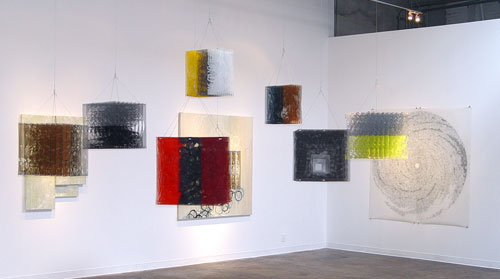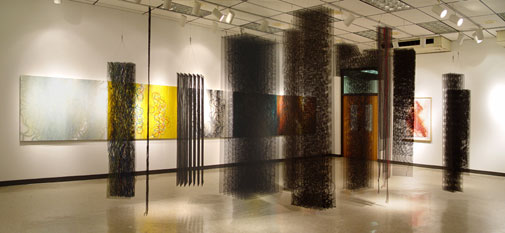Inspiration, by Design
By Carol Motsinger, photography by John Fletcher
For John Dean, design isn’t just a college degree.
“Design is all around us,” Dean said, who is a freelance designer and promoter of Pecha Kucha Night Asheville, an art- and design-focused presentation series returning Friday.
“We think of it when we set the table for dinner, we witness it when we admire sculpture, it is what attracts us to cool websites, and it is what inspires most of our consumer choices. … Witnessing design is a unique human attribute. Some people do it for a living; some people just admire it.”
Pecha Kucha Night is a design forum with more than 460 installments across the globe. Friday night’s event at the Phil Mechanic Studios will be Asheville’s fifth installment in about two years.
Dean wanted to bring the idea to Asheville “in an effort to develop a salonlike forum in which we could discuss, refine and explore design — big, small, professional and amateur.”
Presenters each show 20 slides for 20 seconds each, meaning the total presentation can only be 6 minutes and 40 seconds.
“They move along without fail, forcing the presentation to keep up with the images,” Dean said. “The presentation format is long enough to allow for a succinct, substantial narrative, and short enough for a shy person to tackle.”
Friday’s lineup includes Kitty Love, arts advocate and head of Asheville Area Arts Council; Rob Seven, Asheville folk artist; Ursula Gullow, arts writer/blogger and painter; and Brian Dunsmore, marketing director with The Wine Studio of Asheville.
“This presentation will have slides from artists, graphic designers, craft persons, culinary artists, nondesign professionals, graffiti artists, illustrators and community organizers,” Dean said.
Asheville artist Kenn Kotara has attended Pecha Kucha Night before but will be manning the projector for the first time Friday.
“I think it’s an exciting format,” Kotara said. “I like the succinct brevity of it. You are able to put your ideas out there. It’s more like sketches if you think of it in terms of artwork. These are the quick sketches.”
Kotara said his presentation explores color and form, but the 20 slides in his script keeps changing.
“I added a new image the other day when I was watching a program with my son and this image made me realize and connect with something,” Kotara said.
Kotara can find design in everything, from automobiles to clothing to thought processes. “Design has to be looked at as not just a pretty thing, but something that fulfills the aggressive evolution of humanity,” he said.
Dean has been most impressed by past presenters who “work outside of the design profession, but tinker in their spare time making amazing and unique objects out of things in their basement.”
Ron Larsen, who manufactures educational tools for autistic children, produced one of these memorable slide shows, Dean said.
“Through his presentation, Ron showed how great design can be achieved by listening to and learning with the end-user,” he said.
“Ron’s presentation also described his process of creating a series of incredibly useful educational tools out of a common bit of waste, the average shoebox. Through his efforts, he cleverly created learning tools out of shoeboxes, crafting or using them in a variety of ways in order to understand and educate autistic patients.”



